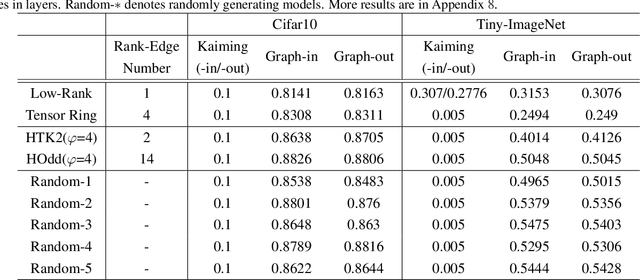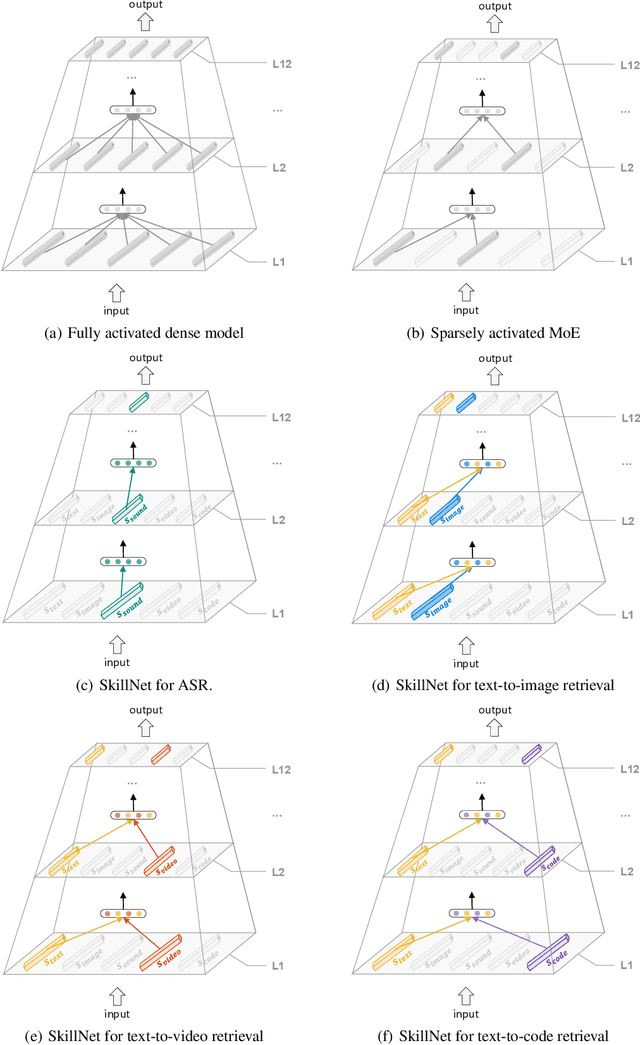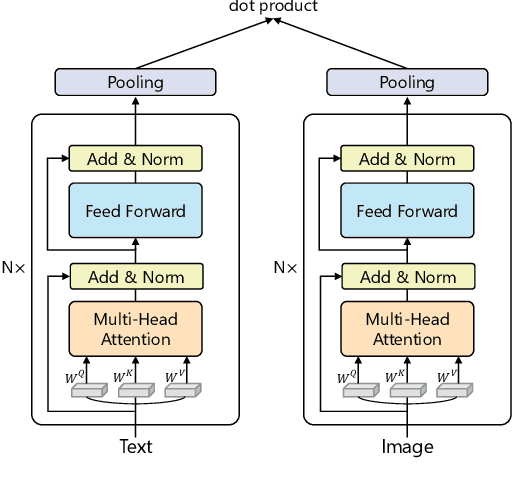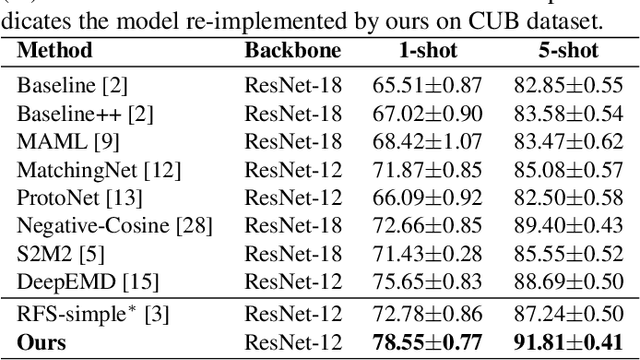Jingquan Wang
R1-Code-Interpreter: Training LLMs to Reason with Code via Supervised and Reinforcement Learning
May 27, 2025



Abstract:Despite advances in reasoning and planning of R1-like models, Large Language Models (LLMs) still struggle with tasks requiring precise computation, symbolic manipulation, optimization, and algorithmic reasoning, in which textual reasoning lacks the rigor of code execution. A key challenge is enabling LLMs to decide when to use textual reasoning versus code generation. While OpenAI trains models to invoke a Code Interpreter as needed, public research lacks guidance on aligning pre-trained LLMs to effectively leverage code and generalize across diverse tasks. We present R1-Code-Interpreter, an extension of a text-only LLM trained via multi-turn supervised fine-tuning (SFT) and reinforcement learning (RL) to autonomously generate multiple code queries during step-by-step reasoning. We curate 144 reasoning and planning tasks (107 for training, 37 for testing), each with over 200 diverse questions. We fine-tune Qwen-2.5 models (3B/7B/14B) using various SFT and RL strategies, investigating different answer formats, reasoning vs. non-reasoning models, cold vs. warm starts, GRPO vs. PPO, and masked vs. unmasked code outputs. Unlike prior RL work on narrow domains, we find that Code Interpreter training is significantly harder due to high task diversity and expensive code execution, highlighting the critical role of the SFT stage. Our final model, R1-CI-14B, improves average accuracy on the 37 test tasks from 44.0\% to 64.1\%, outperforming GPT-4o (text-only: 58.6\%) and approaching GPT-4o with Code Interpreter (70.9\%), with the emergent self-checking behavior via code generation. Datasets, Codes, and Models are available at https://github.com/yongchao98/R1-Code-Interpreter and https://huggingface.co/yongchao98.
ChronoLLM: A Framework for Customizing Large Language Model for Digital Twins generalization based on PyChrono
Jan 07, 2025Abstract:Recently, the integration of advanced simulation technologies with artificial intelligence (AI) is revolutionizing science and engineering research. ChronoLlama introduces a novel framework that customizes the open-source LLMs, specifically for code generation, paired with PyChrono for multi-physics simulations. This integration aims to automate and improve the creation of simulation scripts, thus enhancing model accuracy and efficiency. This combination harnesses the speed of AI-driven code generation with the reliability of physics-based simulations, providing a powerful tool for researchers and engineers. Empirical results indicate substantial enhancements in simulation setup speed, accuracy of the generated codes, and overall computational efficiency. ChronoLlama not only expedites the development and testing of multibody systems but also spearheads a scalable, AI-enhanced approach to managing intricate mechanical simulations. This pioneering integration of cutting-edge AI with traditional simulation platforms represents a significant leap forward in automating and optimizing design processes in engineering applications.
SimBench: A Rule-Based Multi-Turn Interaction Benchmark for Evaluating an LLM's Ability to Generate Digital Twins
Aug 21, 2024Abstract:We introduce SimBench, a benchmark designed to evaluate the proficiency of student large language models (S-LLMs) in generating digital twins (DTs) that can be used in simulators for virtual testing. Given a collection of S-LLMs, this benchmark enables the ranking of the S-LLMs based on their ability to produce high-quality DTs. We demonstrate this by comparing over 20 open- and closed-source S-LLMs. Using multi-turn interactions, SimBench employs a rule-based judge LLM (J-LLM) that leverages both predefined rules and human-in-the-loop guidance to assign scores for the DTs generated by the S-LLM, thus providing a consistent and expert-inspired evaluation protocol. The J-LLM is specific to a simulator, and herein the proposed benchmarking approach is demonstrated in conjunction with the Chrono multi-physics simulator. Chrono provided the backdrop used to assess an S-LLM in relation to the latter's ability to create digital twins for multibody dynamics, finite element analysis, vehicle dynamics, robotic dynamics, and sensor simulations. The proposed benchmarking principle is broadly applicable and enables the assessment of an S-LLM's ability to generate digital twins for other simulation packages. All code and data are available at https://github.com/uwsbel/SimBench.
A Unified Weight Initialization Paradigm for Tensorial Convolutional Neural Networks
May 28, 2022



Abstract:Tensorial Convolutional Neural Networks (TCNNs) have attracted much research attention for their power in reducing model parameters or enhancing the generalization ability. However, exploration of TCNNs is hindered even from weight initialization methods. To be specific, general initialization methods, such as Xavier or Kaiming initialization, usually fail to generate appropriate weights for TCNNs. Meanwhile, although there are ad-hoc approaches for specific architectures (e.g., Tensor Ring Nets), they are not applicable to TCNNs with other tensor decomposition methods (e.g., CP or Tucker decomposition). To address this problem, we propose a universal weight initialization paradigm, which generalizes Xavier and Kaiming methods and can be widely applicable to arbitrary TCNNs. Specifically, we first present the Reproducing Transformation to convert the backward process in TCNNs to an equivalent convolution process. Then, based on the convolution operators in the forward and backward processes, we build a unified paradigm to control the variance of features and gradients in TCNNs. Thus, we can derive fan-in and fan-out initialization for various TCNNs. We demonstrate that our paradigm can stabilize the training of TCNNs, leading to faster convergence and better results.
One Model, Multiple Modalities: A Sparsely Activated Approach for Text, Sound, Image, Video and Code
May 12, 2022



Abstract:People perceive the world with multiple senses (e.g., through hearing sounds, reading words and seeing objects). However, most existing AI systems only process an individual modality. This paper presents an approach that excels at handling multiple modalities of information with a single model. In our "{SkillNet}" model, different parts of the parameters are specialized for processing different modalities. Unlike traditional dense models that always activate all the model parameters, our model sparsely activates parts of the parameters whose skills are relevant to the task. Such model design enables SkillNet to learn skills in a more interpretable way. We develop our model for five modalities including text, image, sound, video and code. Results show that, SkillNet performs comparably to five modality-specific fine-tuned models. Moreover, our model supports self-supervised pretraining with the same sparsely activated way, resulting in better initialized parameters for different modalities. We find that pretraining significantly improves the performance of SkillNet on five modalities, on par with or even better than baselines with modality-specific pretraining. On the task of Chinese text-to-image retrieval, our final system achieves higher accuracy than existing leading systems including Wukong{ViT-B} and Wenlan 2.0 while using less number of activated parameters.
Semantically Proportional Patchmix for Few-Shot Learning
Feb 17, 2022



Abstract:Few-shot learning aims to classify unseen classes with only a limited number of labeled data. Recent works have demonstrated that training models with a simple transfer learning strategy can achieve competitive results in few-shot classification. Although excelling at distinguishing training data, these models are not well generalized to unseen data, probably due to insufficient feature representations on evaluation. To tackle this issue, we propose Semantically Proportional Patchmix (SePPMix), in which patches are cut and pasted among training images and the ground truth labels are mixed proportionally to the semantic information of the patches. In this way, we can improve the generalization ability of the model by regional dropout effect without introducing severe label noise. To learn more robust representations of data, we further take rotate transformation on the mixed images and predict rotations as a rule-based regularizer. Extensive experiments on prevalent few-shot benchmarks have shown the effectiveness of our proposed method.
 Add to Chrome
Add to Chrome Add to Firefox
Add to Firefox Add to Edge
Add to Edge